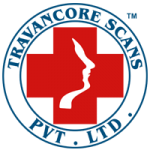CT BRAIN
A cranial CT scan is a diagnostic tool used to create detailed pictures of features inside your head, such as your skull, brain, ventricles, This procedure is noninvasive, meaning it doesn’t require surgery. It’s usually suggested to investigate various symptoms involving the nervous system before turning to invasive procedures.
Reasons for a BRAIN CT scan
- abnormalities of the bones of your skull
- arteriovenous malformation, or abnormal blood vessels
- atrophy of brain tissue
- birth defects
- brain aneurysm
- hemorrhage, or bleeding, in your brain
- hydrocephalus, or fluid buildup in your skull
- infections or swelling
- injuries to your head, face, or skull
- stroke
- tumors
Your doctor may order a cranial CT scan if you’ve had an injury or display any of these symptoms with no apparent cause:
- fainting
- headache
- seizures, especially if any occurred recently
- sudden behavioral changes or changes in thinking
- hearing loss
- vision loss
- muscle weakness or numbness and tingling
- speech difficulty
- difficulty swallowing
A brainl CT scan can also be used to guide other procedures such as surgery or biopsy.
PREPARATION OF PATIENT
You should wear comfortable, loose-fitting clothing to your exam. You may be given a gown to wear during the procedure.
Metal objects, including jewelry, eyeglasses, dentures and hairpins, may affect the CT images and should be left at home or removed prior to your exam. You may also be asked to remove hearing aids and removable dental work. Women will be asked to remove bras containing metal underwire. You may be asked to remove any piercings, if possible.
PROCEDURE
A BRAIN CT scanner takes a series of X-rays. A computer then puts these X-ray images together to create detailed pictures of your head. These images help your doctor make a diagnosis.
The procedure is usually done in a hospital or outpatient imaging center. It should take only about 15 minutes to complete your scan.
On the day of the procedure, you must remove jewelry and other metal objects. They can damage the scanner and interfere with the X-rays.
You’ll probably be asked to change into a hospital gown. You’ll lie on a narrow table either face up or face down, depending on the reasons for your CT scan.
It’s very important that you remain completely still during the exam. Even a little movement can blur the images.
Some people find the CT scanner stressful or claustrophobic. Your doctor may suggest a sedative to keep you calm during the procedure. A sedative will also help keep you still. If your child is having the CT scan, their doctor may recommend a sedative for these same reasons.
The table will slowly slide so that your head is inside the scanner. You may be asked to hold your breath for a short period. The scanner’s X-ray beam will rotate around your head, creating a series of images of your head from different angles. The individual images are called slices. Stacking the slices creates three-dimensional images.
Images can be seen immediately on a monitor. They will be stored for later viewing and printed. For your security, the CT scanner has a microphone and speakers for two-way communication with the scanner operator.


